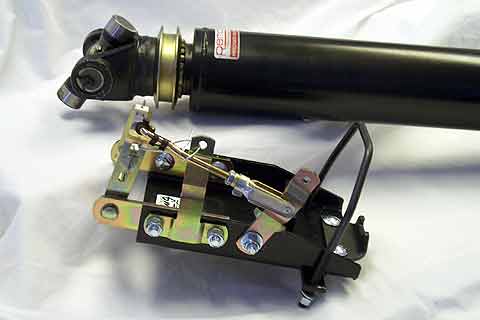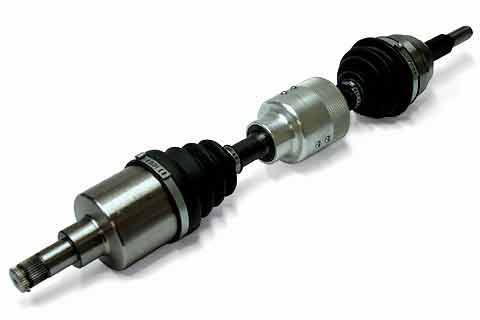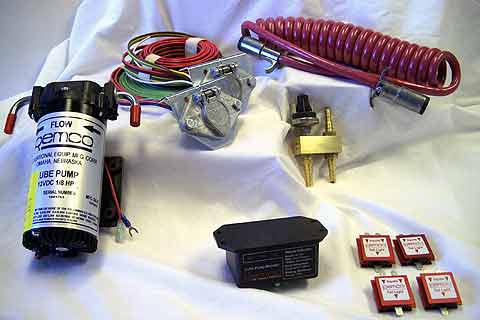You want to tow a vehicle behind your motor home. For most vehicles it takes more than a hitch, tow-bar, electrical connections and perhaps a braking system for the towed vehicles. Many cars, SUVs and trucks with either manual or automatic transmissions can be towed for long distances with all four wheels on the road without a problem. For others, transmissions and even engines can be severely damaged within a few miles. Check www.motorhomemagazine.com/dinghytowingguide/index.cfm or your owners manual.
 Drive Shaft Coupling disengages the drive shaft, and thus the transmissionDrive Shaft Coupling
Drive Shaft Coupling disengages the drive shaft, and thus the transmissionDrive Shaft Coupling If your vehicles cannot be towed without modifications, there are options available to allow towing with all four wheels. REMCO Mfg., www.remcotowing.com, which has been developing and marketing towing accessories for nearly three decades, offers several.
For rear-wheel-drive vehicles with manual or automatic transmissions, the Drive Shaft Coupling disengages the drive shaft, and thus the transmission. Essentially a mechanical clutch, the Drive Shaft Coupling is installed at the rear of the drive shaft, near the differential. Activate the control knob from the driver's seat of the towed vehicle and the clutch is disengaged for towing or engaged for driving. A shorter drive shaft is needed because it is located between the drive shaft and differential. REMCO custom builds new replacement drive shafts with the coupling installed or the existing drive shaft can be reworked by REMCO to fit.
For front-wheel-drive vehicles, the Axle-Lock disconnects one front axle. When the Axle-Lock is in the disengaged position, the left wheel can turn forward, while the outer portion of the right axle turns freely in the opposite direction. Therefore, the wheels turn freely and the transmission remains stationary. Some manufacturers use this technique on 4-wheel-drive vehicles to disconnect the extra axle when not needed. To engage or disengage the Axle-Lock, turn the front wheels to the far right as possible. Then reach around the passenger side front tire and rotate the Axle-Lock housing to engage and disengage the Axle-Lock.
Finally, for vehicles with automatic transmissions, there is the Lube Pump for many front-wheel-drive or rear-wheel-drive vehicles. The Lube Pump compensates for the fact that when towed, the transmission's built-in pump driven by the engine, is not pumping automatic transmission fluid (ATF). Therefore, ATF does not flow through the transmission to provide needed lubrication and cooling.
Installed in the engine compartment, the Lube Pump draws ATF from the transmission's pan and pumps it through the radiator cooler then into the transmission's lubrication system. The pump is powered off the tow vehicle's electrical system so you will not get to your destination with a dead battery in the towed vehicle.
An electronic monitor alerts you with warning lights and an alarm should there is any problems in the lubrication system as well as if you forget to connect the electrical plug or turn the Lube Pump on. A single electrical cable between the towing and towed vehicles provides all the circuits for the pump, provide monitoring and the towed vehicle's tail lights. Simply hitch up the vehicle, connect the cable, and turn on the switch on the Lube Pump monitor.






